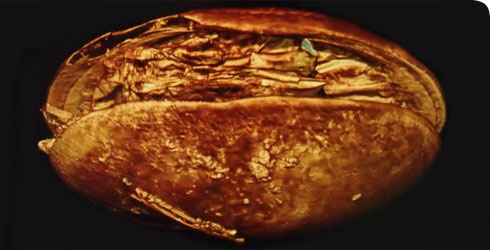Distribution and habitat
Distribution
This species has been recovered from the Cretaceous of Brazil. It would appear that members of the genus Harbinia are common in Lower Cretaceous non-marine sediments. However, the exact definition of this genus and therefore its distribution is subject to much debate amongst ostracodologists.
Habitat
Ostracods are bivalved crustaceans that inhabit all aquatic environments and some damp terrestrial ones.
Harbinia micropapillosa has been found in rocks that were deposited in freshwater systems. A close living relative Eucypris virens also inhabits these environments.
Conservation
The type locality for the extinct fossil Harbinia micropapillosa yields a number of important and well preserved 3-D fossils including fish and insects.
As a result the rock formations are protected under national law in an attempt to suppress the illicit fossil trade that has been a problem in the past.
